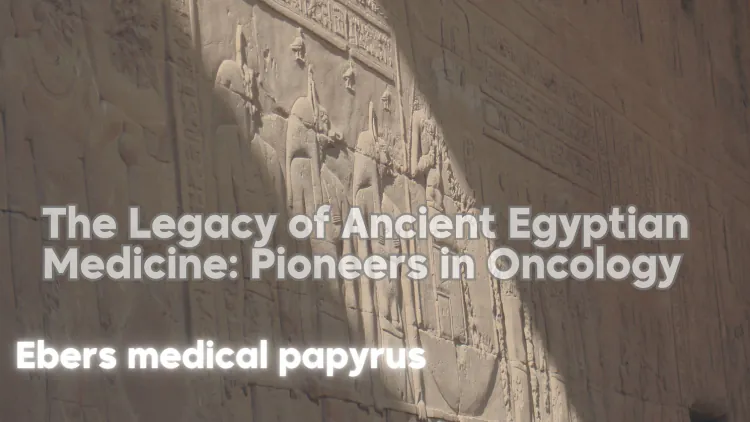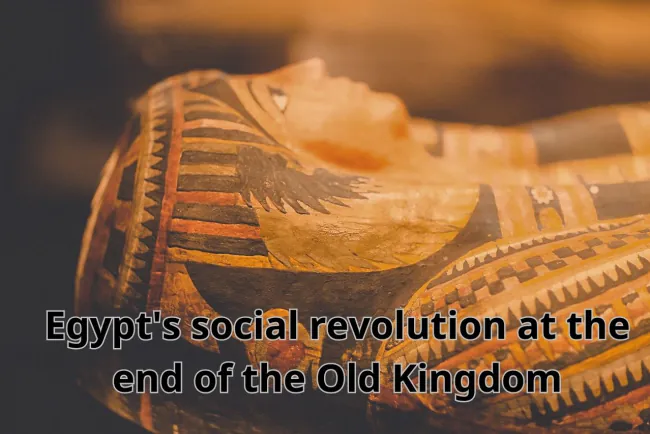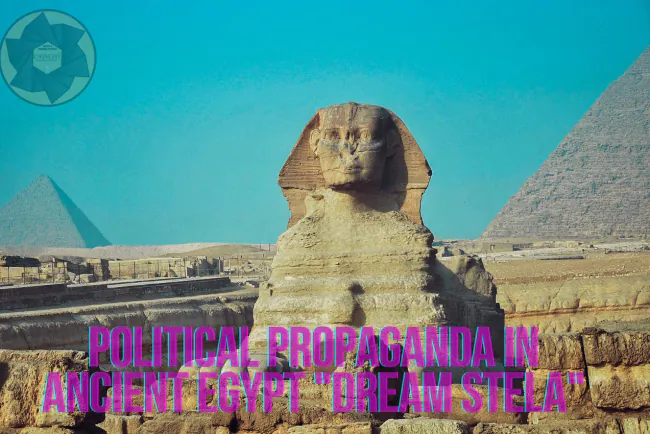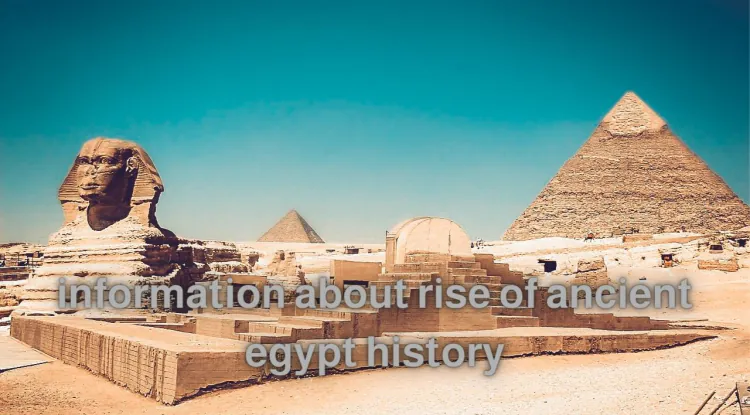The Legacy of Ancient Egyptian Medicine: Pioneers in Oncology
The civilization of ancient Egypt has long fascinated historians and archaeologists. Renowned for their monumental pyramids and intricate hieroglyphics, the ancient Egyptians also made significant strides in the field of medicine, laying the groundwork for many modern practices. This article explores the fascinating world of ancient Egyptian medicine, with a specific focus on their understanding and treatment of cancer.

Understanding the Ancient Egyptian Civilization
Ancient Egypt, a civilization that spanned from 3300 to 525 B.C.E., was a cradle of numerous pioneering achievements, including the beginnings of recorded medical practice. The structured society, equipped with written language and mathematics, allowed the ancient Egyptians to document and develop medical ideas, contributing significantly to the knowledge pool of future generations.
Ancient Egyptian Medicine: Blending Supernatural and Natural Remedies
In ancient Egypt, the practice of medicine was a sophisticated blend of the supernatural and natural. The Egyptians believed in the intervention of gods, demons, and spirits in causing diseases, but they also trusted in practical, natural remedies, such as herbs and surgical procedures.
The Role of Documents: Papyri and Medical Literature
The ancient Egyptians' ability to document their medical practices has provided modern-day scholars with a wealth of knowledge. Of particular note are medical treatises, such as the Edwin Smith Papyrus and the Ebers Papyrus. These documents, containing detailed descriptions of medical conditions and their treatments, serve as a testament to the advanced medical knowledge of the ancient Egyptians.
The Edwin Smith Papyrus: An Insight into Ancient Oncology
The Edwin Smith Papyrus, dating back to the Pyramid Age (around 3000 – 2500 B.C.E.), provides the earliest description of human tumors. This treatise presents a collection of 48 medical cases of injuries, including several cases of breast tumors.
Interestingly, the ancient physician's approach to diagnosing and treating these tumors was methodical and remarkably modern. They employed ocular and tactile examinations, observing the visual and tactile characteristics of the tumors, such as swelling, redness, and temperature, to formulate a diagnosis and treatment plan.
Surgical Procedures and Treatments
The ancient Egyptians demonstrated proficiency in basic surgical procedures. From setting broken bones to treating burns, they possessed a variety of medical skills. The Ebers Papyrus provides the earliest reference to cauterization as a surgical treatment for tumors. Bandaging was a common practice, often incorporating plant products, such as willow leaves, to treat inflammation.
The Role of Hygiene and Nutrition
The ancient Egyptians understood the importance of maintaining good hygiene and healthy eating habits for overall health. They advised people to wash and shave their bodies to prevent infections, to eat carefully, and to avoid unclean animals and raw fish. This advice echoes modern understanding of the role of hygiene and nutrition in preventing disease.
The Ancient Egyptian Approach to Oncology
The ancient Egyptians demonstrated a surprisingly advanced understanding of oncology for their time. They could describe primary and metastatic tumors in great detail and recommended removing the entire mass to prevent local recurrence or distant metastasis.
They also identified natural substances with antibiotic and anti-inflammatory properties, such as honey, onions, and incense, that could be used to treat infections. They even discovered the use of natural substances such as salicin, extracted from the willow tree, to reduce inflammation and pain, a precursor to the development of modern aspirin.
Mummies and Neoplasms: Insights into Ancient Oncology
The study of ancient Egyptian remains, particularly mummies, has provided valuable insights into the presence of tumors and neoplasms in the population. Radiologic diagnoses and DNA extraction through molecular cloning have allowed researchers to discover evidence of malignant tumors in ancient Egyptians, suggesting that cancer has been a human malady for thousands of years.
The Medical Profession in Ancient Egypt
Being a doctor in ancient Egypt was a respected profession. Physicians had to be literate, clean in body and spirit, and often served dual roles as priests and healers. There were various specializations, including dentists, proctologists, gastroenterologists, and ophthalmologists.
The Enduring Legacy of Ancient Egyptian Medicine
The knowledge and practices of ancient Egyptian medicine have had a profound impact on the field of medicine throughout history. Their understanding of diseases, particularly cancer, and their methodical approach to diagnosis and treatment, has undeniably contributed to advancements in modern medicine.
Ebers medical papyrus:
One of the most important fields in which the ancient Egyptian excelled was the medical field. The ancient Egyptians were very advanced in the science of medicine, and the “Ebers” Papyrus is considered the largest of the ancient Egyptian manuscripts written in the science of medicine, as it consists of 108 columns written on papyrus paper. The length of this papyrus is about 19 meters.
This papyrus classified many medical conditions and contained several medical sections specialized in treating specific diseases, including gynecology, dentistry, ophthalmia, parasitology, and many other diseases, including skin diseases.
There are also other medical sections written on the papyrus, such as “treatment of infections, treatment of tumors, treatment of nervous breakdowns, and treatment of the heart and blood vessels.” The papyrus contains a number of prescriptions for therapeutic medical drugs.
Researchers believed that the history of the Ebers Papyrus dates back to the 16th century BC, but recent studies have confirmed that its history dates back to the era of King Ahmose, and some suggest that it was copied from much older papyri. It has been shown that it was written much earlier and may date back to the reign of King Ahmose, and it is even possible that it was copied from manuscripts older than that.
Conclusion
The civilization of ancient Egypt, renowned for its pyramids and hieroglyphics, was also a pioneer in the field of medicine. With a nuanced blend of supernatural and natural remedies, meticulous documentation of medical knowledge, and a methodical approach to diagnosis and treatment, the ancient Egyptians laid the groundwork for many practices in modern medicine. Their understanding of cancer, in particular, demonstrates a remarkable level of sophistication and provides a fascinating insight into the history of oncology. Their legacy continues to inspire and inform medical practitioners today.
What's Your Reaction?





















